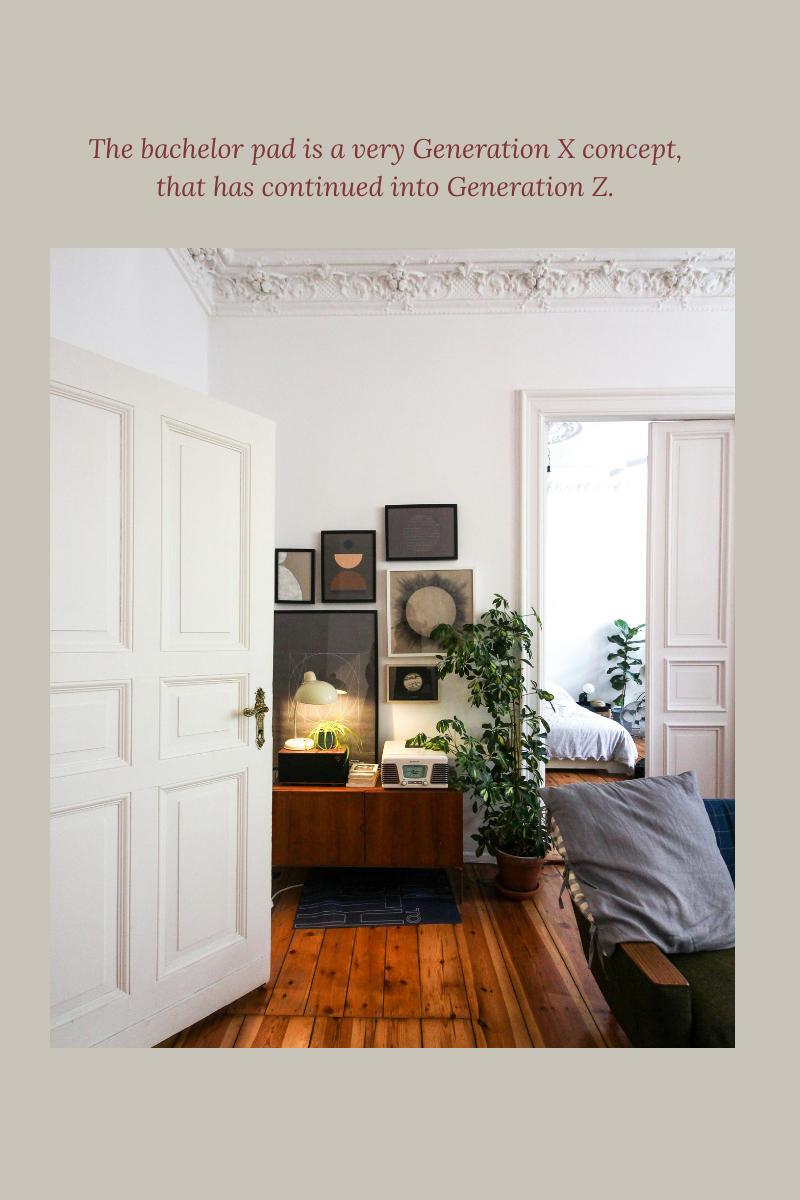Why Gen Z Cares More About Home Design: It’s Not Their Parents’ Idea of Home
Image via Catherina Schurmann
The next statement is about to upset many people—Gen Z has more of an interest in interior design than other generations before them. Is that to say that other generations have sad looking homes? No. But it is to say that Gen Z is more intentional with learning about design and exploring their design style. And no, we’re not just talking about trending aesthetics. So why are they so keen to have a nice nest?
They Work Differently
Image by Trulery via Midjourney
One explanation for this is how attitudes towards work have changed. For Gen Z, a large factor is COVID-19. The American Community Survey (ACS) found that all major industries saw a massive increase in remote working between 2019 and 2021. After social distancing policies were removed in 2022, it didn’t return to normal. Of the 21 industries they surveyed, only four (agriculture, forestry, fishing, and hunting) met pre-2019 levels for remote work.
Many Gen Z’ers graduated higher education or started entry-level roles around the time that the US went into lockdown, and the circumstances forced many to work from home. Attitudes towards remote working have changed and many physical places of work have permanently closed or moved to a hybrid style of working. Working from home can quickly become difficult when your space doesn’t promote productivity, reduce stress, or create a healthy boundary between work and downtime. So it makes sense that so many, especially Gen Z, are decorating their spaces to reflect their personal style in a work-from-home world.
Separation of work and rest is a particular challenge in the modern world, with modern homes often boasting open-plan designs. One remedy is dividers, but also the use of color, texture, or furniture, such as open shelving, to subtly break up space. This allows privacy and increases your psychological security. Beyond privacy, sensory overload can trigger your fight or flight response, making an all-in-one home difficult to both work and live in. Carving out areas within an open-plan space can help reduce smells, sounds, and visual stimuli that make you feel overwhelmed. Whichever approach you take, define spaces in a way that works for your life and your style.
The Home isn’t Just a Woman’s Domain
Image via Julia (buymecoffee.com)
A key difference in Gen Z’s approach to design lies in how their understanding of gender roles have changed. The “bachelor pad”, once understood in popular culture as a bland, semi-functional, cheap, and often untidy space, has shifted to a sleek, cultured, and craftsmanship-forward way to showcase a guy’s interests, while also serving as a refuge from a long day’s work.
The bachelor pad is a very Generation X (born between 1965-80) and Millennial (born between 1981-96) concept, as these generations have seen a sustained decrease in marriage rates and delay in average marriage ages, according to US census data. The trend has continued into Generation Z. Independent living is increasingly popular, and the average age of marriage in the US is now 28 years for women and 30 years for men, almost a decade older than the average for Boomers (born between 1946-64).
So were the unimaginative bachelor pads of the 90s and noughties truly “missing a woman’s touch”? Gen Z doesn't think so. As the marriage rate continues to drop and average marriage age continues to rise, another factor is the growing popularity and design styles of male interior designers like Nate Berkus, Ethan Gaskill, and Drew Michael Scott. Men have been influencing design for years, from fashion houses to interior icons like David Hicks and Billy Baldwin, but today, the fluidity of gender roles makes their presence in the home space especially visible. With design no longer coded as solely “feminine,” male designers are at the forefront of shaping how we live—a shift reflected in the rise of stay-at-home husbands and a more gender-neutral view of the home compared to generations past.
Creativity Against the Odds
Image via Avi Richards
Homeownership for Gen Z is also not as common. At 65.1% in the second quarter of 2025, homeownership in the US is much lower than the years that Gen X and Millennials were trying to step onto the property ladder. Still, there have been other times where this has been the case—the 2008 financial crisis plummeted homeownership for close to a decade. But with wage rates not matching increasing house prices, homeownership rates are back on a downward trend and many are faced with the reality of forever being a tenant despite their best efforts to climb the career ladder.
So, instead of waiting on homes that they can afford, they are designing their dream homes now in rented spaces, or opting for renovations and self-builds—and some have been able to sell their renovated and self-built properties to get further up the property ladder. As one netizen currently renovating a property put it (minus the expletives), “The problem’s not that you’re poor. It’s that you suck at being poor.”
And the irony is that being good at being “poor” actually improves your economic circumstances. Not only does creating a more enjoyable living space boost your mood and productivity, it can also increase your home’s market value, easing money woes and improving your mental well-being.
Gen Z’s Decorest approach is changing how we think about home — but will it last? Tell us what you think in the comments!
This is an ongoing series exploring fashion and design psychology. Support contributors and keep TruForm interviews going by joining us on Patreon.
Written by Cheyenne
Cheyenne is a lifestyle writer with a particular interest in fashion, interiors and culture.





